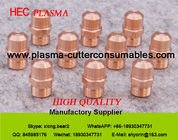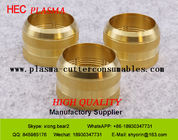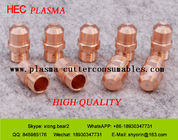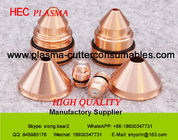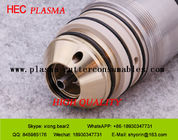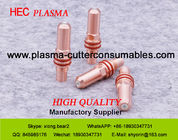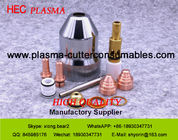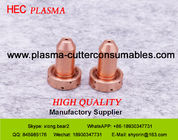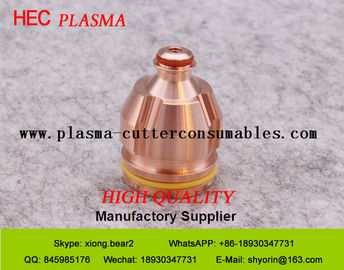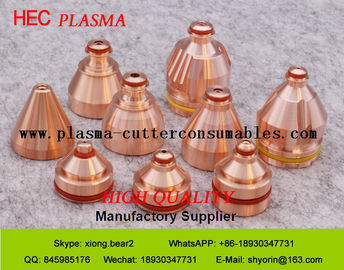Kjellberg Hifocus Nozzle .11.848.221.426 G2326 For Plasma Cutter Machine Consumables
Nozzle: M2006, M2007, M2008, M2009, M2010, M2112, R2007, R2008, R2009, R2010, R2011, R2012, S2006X, S2007X, S2008X, S2009X, S2010X, S2011X, S2012X, S2014X, S2016X, S2514X, S2516X, S2518X, S012X, S2112X, S2114X, S2116X, T2115, T2120, T2125, T2127, T2130, T2523, T2525, T2427, T2429, G2006Y, G2207Y, G2008Y, G2009Y, G2010Y, G2011Y, G2012Y, G2014Y, G2016Y, G2326Y, G2330Y, G2331Y, G2514Y, G2516Y, G2518Y, G2725Y, G2727Y, G2729Y.
| Machine |
HEC NO. |
Thum NO. |
Ref NO. |
Description |
|
Hifocus 280i
Hifocus 360i
Hifocus 440i
(Carbon Steel)
|
K94211 |
G901Y |
.11.848.201.142 |
Cooling tube |
| K94212 |
G902Y |
.11.852.201.142 |
Cooling tube |
| K94241 |
G931Y |
.11.848.401.142 |
Cooling tube |
| K0402 |
G002Y |
.11.848.221.300 |
Cathode O2 |
| K0105 |
G015Y |
.11.848.231.350 |
Cathode O2 |
| K0101 |
G011Y |
.11.848.231.320 |
Cathode O2 |
| K0106 |
G016Y |
.11.848.231.360 |
Cathode O2 |
| K0402 |
G092Y |
.11.848.401.310 |
Cathode O2 |
| K7441 |
G101 |
.11.848.221.145 |
Gas guide |
| K1466 |
G2006 |
.11.848.221.406 |
Nozzle O2 25A |
| K1467 |
G2007 |
.11.848.221.407 |
Nozzle O2 35A |
| K54124 |
G3004 |
.11.848.201.1604 |
Nozzle cap |
| K641515 |
G4015 |
.11.848.201.1515 |
Swirl gas cap |
| K641220 |
G4020 |
.11.848.201.1520 |
Swirl gas cap |
| K44191 |
G501 |
.11.848.201.081 |
Protective cap |
| K0403 |
G003Y |
.11.848.221.310 |
Gathode -O2 |
| K7442 |
G102 |
.11.848.221.146 |
Gas guide |
| K1466 |
G2006Y |
.11.848.221.406 |
Nozzle O2 |
| K1467 |
G2007Y |
.11.848.221.407 |
Nozzle O2 |
| K1468 |
G2008Y |
.11.848.221.408 |
Nozzle O2 50A |
| K14610 |
G2010Y |
.11.848.221.410 |
Nozzle O2 80A |
| K14612 |
G2012Y |
.11.848.221.412 |
Nozzle O2 120A |
| K14614 |
G2014Y |
.11.848.221.414 |
Nozzle O2 160A |
| K14616 |
G2016Y |
.11.848.221.416 |
Nozzle O2 200A |
| K14826 |
G2326Y |
.11.848.221.426 |
Nozzle |
| K14830 |
G2330Y |
.11.848.221.430 |
Nozzle |
| K14831 |
G2331Y |
.11.848.221.431 |
Nozzle |
| K11014 |
G2514 |
.11.848.311.614 |
Nozzle |
| K11015 |
G2515 |
.11.848.311.615 |
Nozzle |
| K11016 |
G2516 |
.11.848.311.616 |
Nozzle |
| K11018 |
G2518 |
.11.848.311.618 |
Nozzle |
| K11125 |
G2725 |
.11.848.411.625 |
Nozzle |
| K11127 |
G2727 |
.11.848.411.627 |
Nozzle |
| K11129 |
G2729 |
.11.848.411.629 |
Nozzle |
| K541228 |
G3028 |
.11.848.201.1628 |
Nozzle cap |
| K641522 |
G4022 |
.11.848.201.1522 |
Swirl gas cap |
| K641525 |
G4025 |
.11.848.201.1525 |
Swirl gas cap |
| K641530 |
G4030 |
.11.848.201.1530 |
Swirl gas cap |
| K04242 |
G032Y |
.11.848.421.310 |
Cathode O2 |
| K04244 |
G034Y |
.11.848.421.330 |
Cathode O2 |
| K74251 |
G121 |
.11.848.421.145 |
Gas guide |
| K14826 |
G2326Y |
.11.848.421.426 |
Nozzle O2 280A |
| K14830 |
G2330Y |
.11.848.421.430 |
Nozzle O2 360A |
| K14831 |
G2331Y |
.11.848.421.431 |
Nozzle -O2-400A |
| K541409 |
G3209 |
.11.848.401.1609 |
Nozzle cap |
| K541419 |
G3219 |
.11.848.401.1619 |
Nozzle cap |
| K541429 |
G3229 |
.11.848.401.1629 |
Nozzle cap |
| K641745 |
G4345 |
.11.848.401.1545 |
Swirl gas cap |
| K641750 |
G4350 |
.11.848.401.1550 |
Swirl gas cap |
| K641755 |
G4355 |
.11.848.401.1555 |
Swirl gas cap |
| K44201 |
G521 |
.11.848.401.081 |
Protective cap |
| K94211 |
G901Y |
.11.848.201.142 |
Water Tube |
| K94212 |
G902Y |
.11.852.201.142 |
Water Tube |
| K94241 |
G931Y |
.11.848.401.142 |
Water Tube |
Technical Support:
Plasma cutting is a process that cuts through electrically conductive materials by means of an accelerated jet of hot plasma. Typical materials cut by this process include steel, aluminum, brass and copper though other conductive metals may be cut as well. Plasma cutting is often used in fabrication and welding shops, automotive repair and restoration, industrial construction, salvage and scrapping operations. Due to the high speed, precision cuts, combined with low cost of operation, plasma cutting sees a widespread usage from large scale industrial CNC applications down to small hobbyist shops.
Process:
The basic plasma cutting process involves creating an electrical channel of ionized gas i.e. plasma from the plasma cutter itself, through the work piece to be cut, thus forming a completed electric circuit back to the plasma cutter via a grounding clamp. This is accomplished by a compressed gas (oxygen, air, inert and others depending on material being cut) which is blown through a focused nozzle at high speed toward the work piece. An electrical arc is then formed within the gas, between an electrode near or integrated into the gas nozzle and the work piece itself. The electrical arc ionizes some of the gas, thereby creating an electrically conductive channel of plasma. As electricity from the cutter torch travels down this plasma it delivers sufficient heat to melt through the work piece. At the same time, much of the high velocity plasma and compressed gas blow the hot molten metal away, thereby separating i.e. cutting through the work piece.
Plasma cutting is an effective means of cutting thin and thick materials alike. Hand-held torches can usually cut up to38mm thick steel plate, and stronger computer-controlled torches can cut steel up to 150 mm thick.[1] Since plasma cutters produce a very hot and very localized "cone" to cut with, they are extremely useful for cutting sheet metal in curved or angled shapes.
ety:
Proper eye protection (but not gas welding goggles as these do not give UV protection) and face shields are needed to prevent eye damage called arc eye as well as damage from debris, as per Arc Welding. It is recommended to use green lens shade #8 or #9 ety glasses for cutting to prevent the retinas from being "flashed" or burned. OSHA recommends a shade 8 for Arc Current less than 300, but notes that "These values apply where the actual arc is clearly seen. Experience has shown that lighter filters may be used when the arc is hidden by the workpiece."
Leather gloves, apron and jacket are also recommended to prevent burns from sparks and debris.

 Your message must be between 20-3,000 characters!
Your message must be between 20-3,000 characters! Please check your E-mail!
Please check your E-mail!  Your message must be between 20-3,000 characters!
Your message must be between 20-3,000 characters! Please check your E-mail!
Please check your E-mail! 


